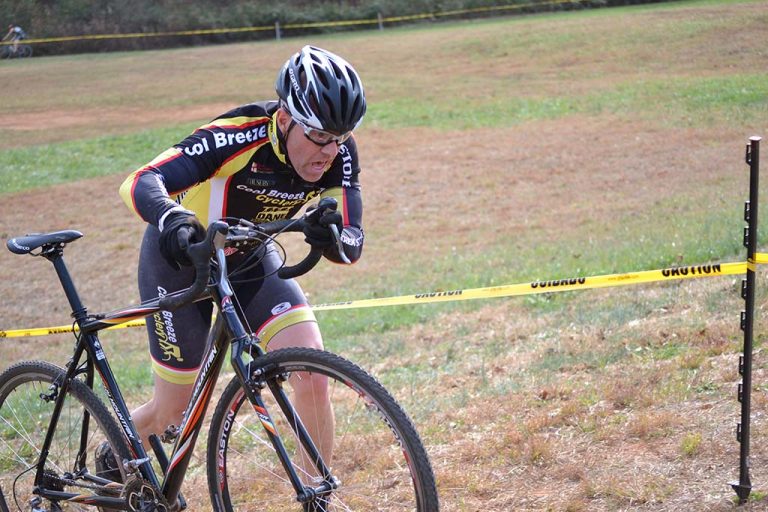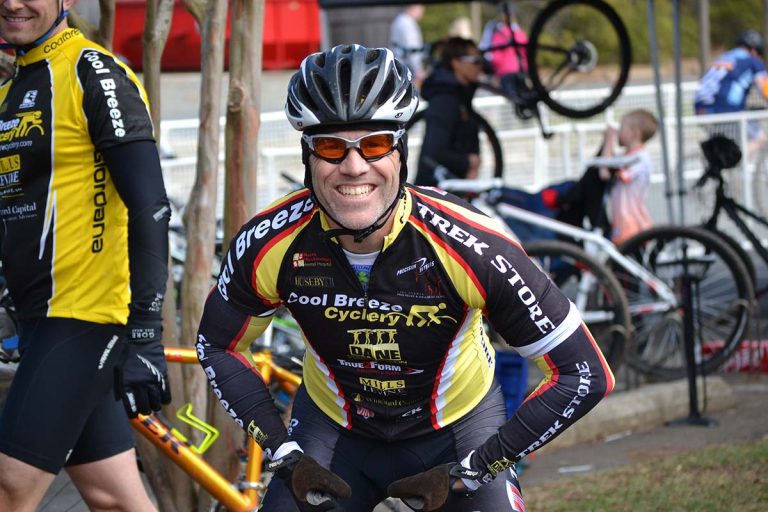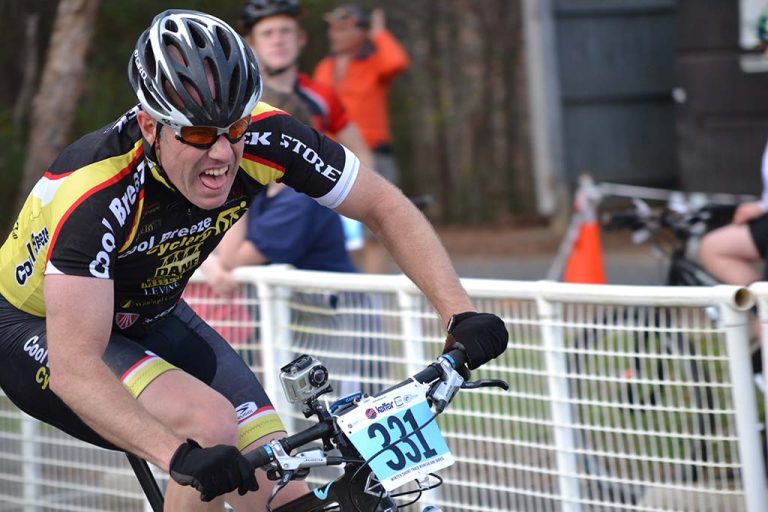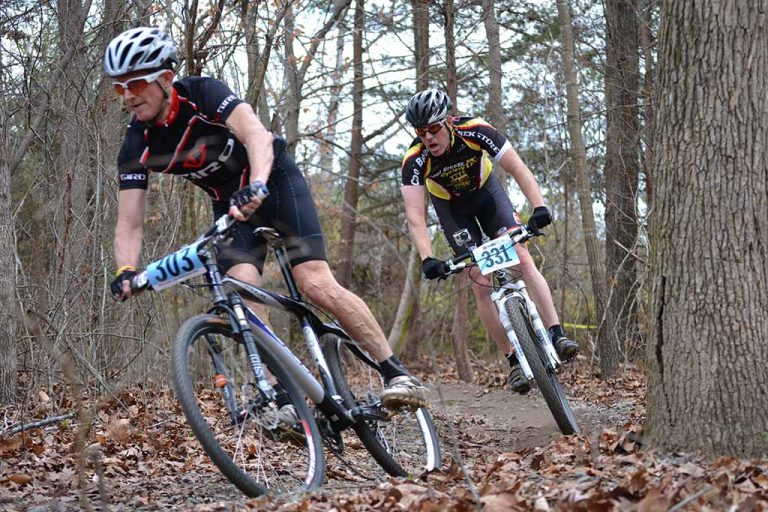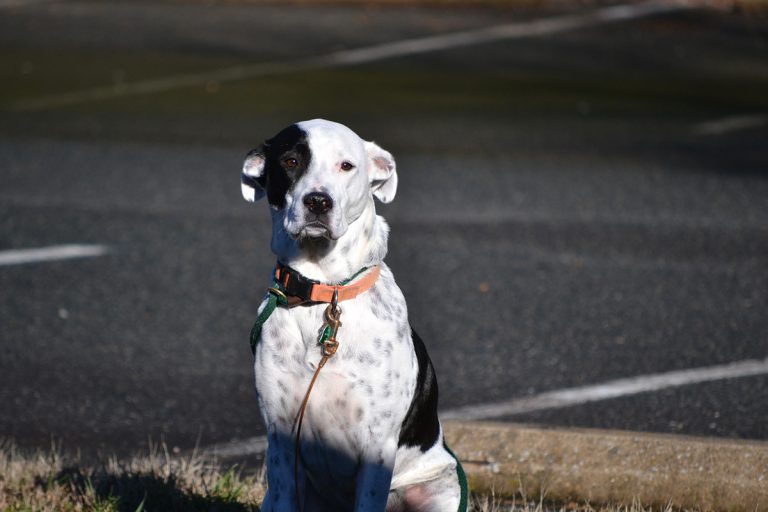Tri Bike Vs Road Bike
(Originally posted in 2013)
There is always a lot of discussion amongst ‘us racers’ as to whether or not there is a significant advantage of riding a Time Trial/Triathlon bike in a time trial. Most of us are aware of all the marketing around aero frames, wheels, helmets, position, etc. You know what I’m talking about, this wheel will save you 40 seconds, an aero helmet will save you a minute…
This year I am riding with a Power Meter on my road bike so I decided to run a test – I did the first Charlotte Motor Speedway time trial of the series Eddy Mercx style (Road bike, road helmet, standard wheels) for two reasons: 1) To get a real world threshold test to get a good training number and 2) to see if a Tri bike is really faster
I haven’t done much racing this season so I don’t have any race fitness, but I have been riding well. I spent a lot of time in the riding studio at Cool Breeze Coaching. Coach Sarah has done a great job keeping me fit. We recently finished up our Tempo-to-Lactate training session and I tested out at 300 watts for my 20 minute threshold test. Knowing this number allowed me to determine how hard I worked in my TT effort.
During my warm up, I knew it was going to be a rough night because of the wind. It seemed like the wind was swirling around the track and there weren’t going to be any significant tailwind sections. I warmed up for about 30 minutes and started my TT right around 7:43pm.
I started out as I usually do and noticed right away that I wasn’t up to TT speed when I entered the track. Was it my legs or the bike? Only my finish time would tell me. I tried to settle into a good pace and see what happened. My first lap was strong but I could tell by the wind that it was going to be a rough night.
On my second lap, I was starting to hurt. This is when the mind games started, was it my fitness, was it my bike, was it the wind, do I suck?? I’m sure most of you can relate to this while doing a time trial.
On my third lap, I definitely was hurting and I noticed something, I was getting passed. I know that might sound arrogant, but I typically only get passed by the superfast guys that finish in the top 15 overall. This also added to the mind games. All I could do was keep my head down and go as hard as I could.
On my 5th lap, I was able to get Leigh-Ann Mueller of Cool Breeze Coaching in sight, but I wasn’t able to catch her. I chased her as hard as I could but couldn’t get any closer as she finished her TT. Cool Breeze Coach Sarah Matchett caught and passed me on her last lap and I still had two to go! My last lap was lonely as I seemed to be the only one on the track. I finished as hard as I could and felt like I was going backwards the whole time. It felt like I was on the track for ever.
My final time was 23:57 and I finished with average of 301 watts for the Time Trial. What does that tell me? My watt number tells me I was going as hard as I could and was able to hold my ‘test watts’ for an additional 4 minutes which is a good thing, but my time was slow. To put this in perspective, I put the following table together that shows my slowest times for each year between 2006-2013.
| Year | Slowest Time |
| 2006 | 21:43 |
| 2007 | 22:01 |
| 2008 | 22:01 |
| 2009 | 21:00 |
| 2010 | 21:34 |
| 2011 | 21:38 |
| 2012 | 22:28 |
| 2013 | 23:57 |
Remember, the conditions always play a part in your overall times and I would say that the conditions for the first Time Trial of 2013 were about as rough as I’ve seen over the years. But, my time was way off from my previous years. I know my effort was really good based on my power meter.
I typically ride a Cervelo P3 with a Zipp 404 on front, rear disc, aero helmet, booties and a skinsuit and I’m set up pretty aggressively. I rode my 2013 Trek Madone 6.9 road bike in this time trial (it is Trek’s new Aero Road bike). If you take out my slowest time from 2012, I was roughly a little over 2 minutes slower riding my road bike. That’s a huge difference – right around 10% slower.
What’s interesting is that the A2 Wind Tunnel in Mooresville did a similar test and their results were consistent with what I experienced. Their conclusion was as follows: Aerodynamics plays a huge role in cycling efficiency. Our time trial (aero) configuration showed an aerodynamic savings of 33% over the road configuration, meaning that roughly 70% of the test rider’s power on the track went into overcoming aerodynamic resistance—a number generally agreed upon by bicycle scientists. You can read the A2 Windtunnel Case Study Here.
I’m looking forward to seeing how my times compare at the next Charlotte Motor Speedway Time Trial when I’m in my full aero setup – although I might borrow Cool Breeze Cyclery’s Demo powertap wheel to get a good power comparison. But it appears to be true, a Time Trial bike is much faster than a Road Bike!


